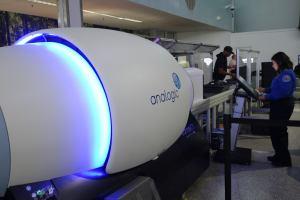
The Transportation Security Administration (TSA) has deployed a 3-D imaging scanner at a security checkpoint in Oakland International Airport (OAK) to counter explosives smuggling and other threats to flights.
The utilized technology is known as computed tomography (CT), and its deployment at Oakland International Airport’s Terminal 2 makes it one of only 15 airports in the country to currently host it.
TSA is testing the system’s algorithms for explosives detection by allowing users to rotate through visual images provided by X-ray. The scanning technology is able to detect shapes and densities of items including bulk and liquid explosives that could be a threat to commercial aviation. If something strikes officers as suspicious, they can then inspect it themselves.
TSA uses CT technology to scan checked baggage, but the agency wants to expand the technology to more security checkpoints for carry-on baggage, which currently use 2-D screening technology. TSA plans to follow through with 40 3-D scanners in airports across the country by the end of the year, in addition to 16 units at federal testing facilities. From there, TSA said it expects to have more than 145 units in airports by the end of fiscal year 2019.
TSA is also testing the state-of-the-art equipment at Baltimore Washington International-Thurgood Marshall Airport (BWI); Chicago O’Hare International Airport (ORD); Cincinnati/Northern Kentucky International Airport (CVG); William P. Hobby Airport (HOU); Indianapolis International Airport (IND); John F. Kennedy International Airport (JFK); Boston Logan International Airport (BOS); Los Angeles International Airport (LAX); Las Vegas McCarran International Airport (LAS); Philadelphia International Airport (PHL); Phoenix Sky Harbor International Airport (PHX); San Diego International Airport (SAN); St. Louis Lambert International Airport (STL); and Washington-Dulles International Airport (IAD).




